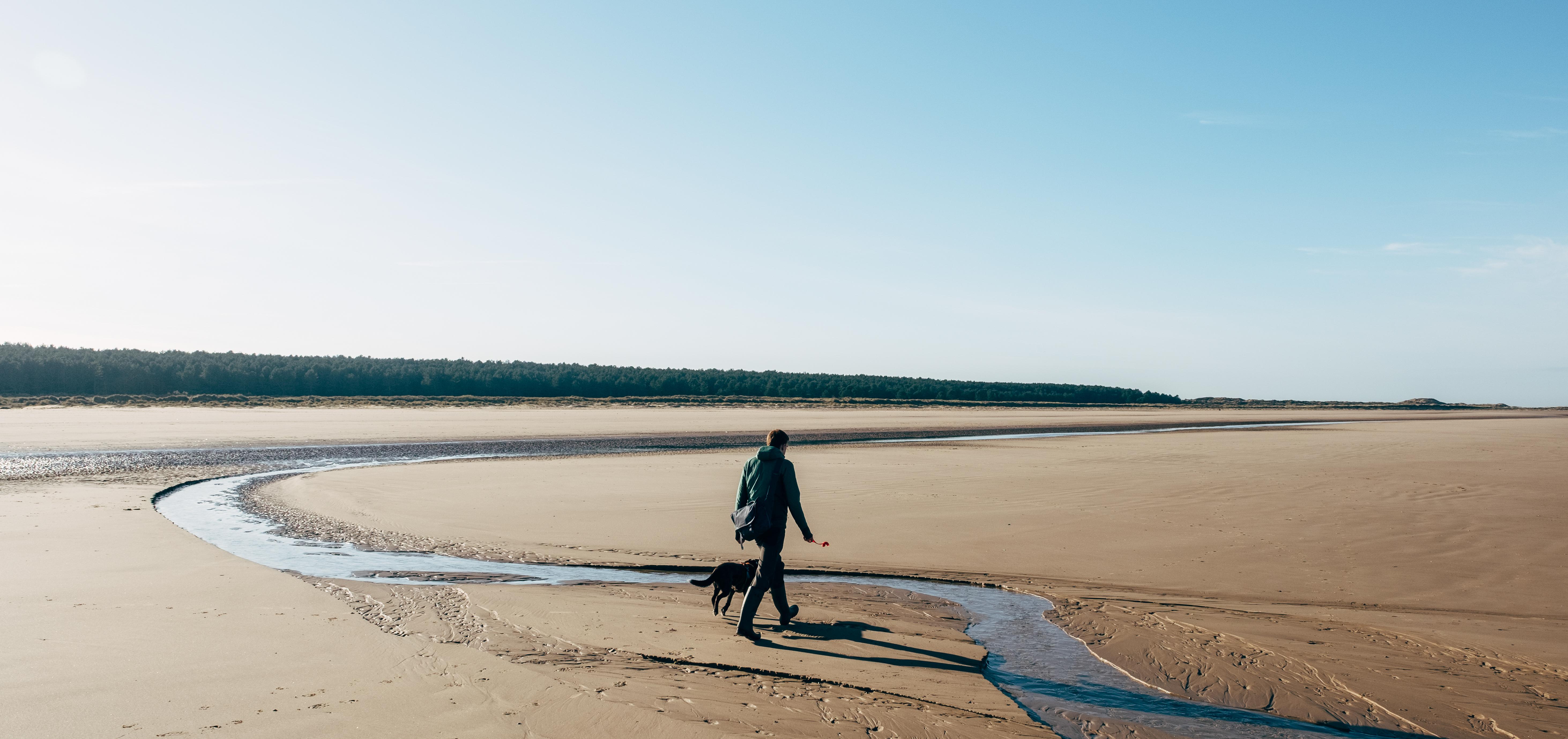Try This Mindful Walking Exercise to Boost Your Mood
Getting outdoors for a walk can do more than just get your heart pumping and your muscles moving. Stepping outside can also provide a moment of peace and space and time to unwind from the stress that can build up over the day.
There's also a wealth of research demonstrating the therapeutic benefits of mindfulness-based therapies for improving mental health and enhancing people’s ability to deal with negative emotions. But while the advantages of mindfulness are clear, the idea of sitting down to do a mindfulness meditation when you've been cooped up inside may not be particularly enticing.
If you struggle with traditional mindfulness practices, try combining stretching your legs with bringing your awareness to the present moment, which could be an effective and convenient activity. And there's growing evidence to support the benefits of mindful walking for well‑being.
One research study found that following a mindful nature walk program induced positive emotions in walkers, who reported feeling more in touch with their emotions, sensations, thoughts, and behavioral patterns. Other research suggests that during mindful walking, mindfulness and feel-good emotions may actually positively influence each other.
Below are some tips to help you start your own mindful walking journey.
Pick Your Path
If you don't have access to hiking trails or country lanes, that’s okay. Mindful walking can be done in your local park or through your neighborhood—mindful walking in urban environments has shown to enhance well‑being and can strengthen a sense of community connection. If you’re limited in your walking options, try taking an unfamiliar route or doing your usual walk in reverse. It might surprise you how much navigating a different path can offer a fresh perspective on familiar surroundings, even if just for 10 minutes.
Tune In to Your Surroundings
There’s also no pressure to find a quiet area to walk in. There are many curious and stimulating sights and sounds in cities that you typically pass by without a second thought—the playful chatter of a young family in the park, the shadow of the city skyline in the evening, or the patchwork of art, posters, and graffiti splashed on the side of buildings. You might find a renewed appreciation for the shifting colors of the season; the crisp, icy wind whistling through stone alleyways; or, the softly creaking branches of the trees lining the sidewalks.
Wherever we are, if we look a bit closer or listen a bit more carefully, we can find ourselves more present and connected with our immediate environments.
Step to It!
One of the best things about mindful walking is that it doesn't take any special equipment, other than comfortable footwear, nor does it require a big time investment. Choose a walking route of a distance that feels comfortable, ideally somewhere where you feel relaxed, and let go of expectations. Simply take a moment to acknowledge your intention for the walk and surrender any desire to rush through it. Start by taking a few breaths and getting a sense of your surroundings, then walk at a comfortable pace.
- Start to focus your attention on the sensations of walking. What does it feel like in your feet, knees, legs, upper body?
- Feel into your toes and the muscles and joints. Pay attention to changes in tension, pressure, or friction. Notice the terrain underfoot—the softness of melting snow, the shallow puddles in the grass, the uneven cobbles, and any cracks in the pavement.
- Focus on each step and the rhythm of your pace. What is your breathing like?
- Next, turn your attention to other senses. What can you hear? Is there wildlife around, the sound of traffic, or are other people talking? What is the loudest sound you can hear? What is the quietest? Are there any constant sounds? Can you detect any scents? Are these aromas pleasant or unpleasant? Does anything smell familiar? Or are there no aromas at all?
- Whenever you find your mind wandering to thoughts and feelings, acknowledge them, then gently bring your attention back to the present moment.
- Next, focus on what you can see around you. What is visually striking in your immediate environment? Where are your eyes drawn? What are the colors of the season? Are there patterns in the clouds?
- Remember, you're simply observing what’s around you, maintaining your awareness of what is in your path of vision. If you find you get caught up in thoughts or feelings, acknowledge them, and gently guide your focus back to what’s in front of you. You could try looking at your feet on the ground, the trees or sky above you, or something in the distance.
- At the end of the walk or at different points throughout your walk, try to focus again on the sensations in your body. How are your legs feeling now? How warm/cool do you feel? Pay attention again to the sensation of each step, your posture, and the shifting of pressure foot-to-foot.
- When you’re done, congratulate yourself and reflect on your experience, how you feel, and what insights you gained. See if you can bring your awareness back to sensations of moving your body during the rest of the day.
Helen Brown is a freelance writer specializing in psychology and wellness topics. She has a Ph.D. in psychology, an MSc in occupational psychology, and a varied background working in mental health and wellbeing.
You May Also Like:
Want to Read More?
Access all of Twill Care’s content, community, and experts for free!
Already a member? Login
Want to Read More?
Access all of Twill Care’s content, community, and experts for free!
sign UP For FreeAlready a member? Login


